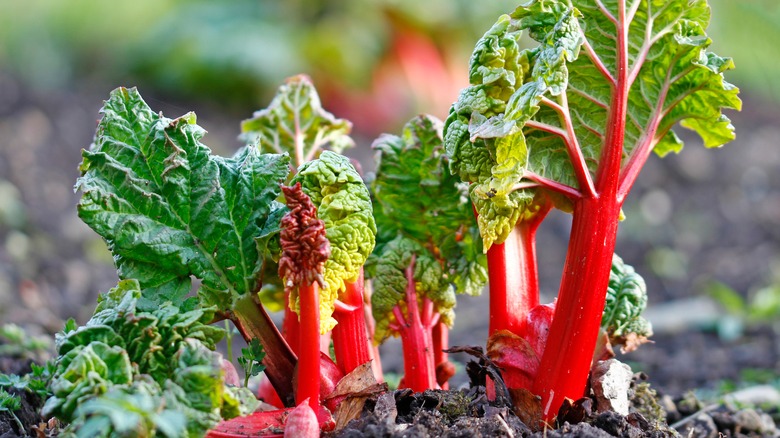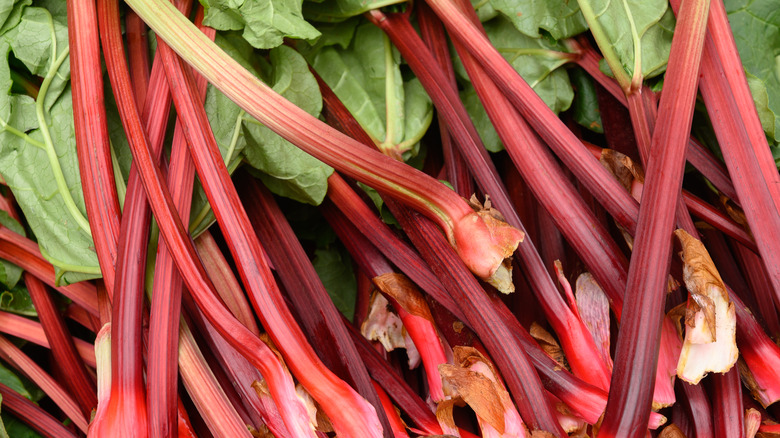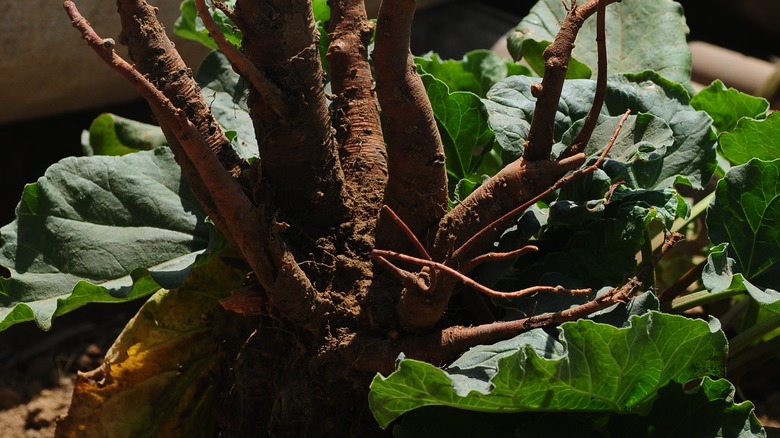The Best Method For Dividing And Transplanting Rhubarb (& The Benefits Of Doing So)
When you see the first hints of buds pushing through the late winter soil, you know that spring is coming and rhubarb season is here. Often the first vegetable to arrive in a garden, this nutritious and prolific perennial can produce dependable harvests for decades. However, just like any other living thing, rhubarb plants start to lose their vigor over time. An easy way to revive your flagging plant is by dividing its roots and replanting.
Yet, chopping into the roots of a beloved plant that's returned for countless springs can be daunting. How can you make sure you don't do more harm than help for your rhubarb? Don't fret. There is plenty of science behind this practice, but it's important to know when to divide your plant and the best methods. You will boost your rhubarb's health and vitality and end up with a better harvest and happier plants.
What are the benefits of splitting rhubarb?
Reliable rhubarb is a perennial that never leaves your garden once it's planted. Yet, you may notice that the crop gradually diminishes or that the plant itself becomes too large for its space. The tough, woody rhizome of an older plant doesn't grow as well as a smaller root, and dividing the bundle into smaller bits to replant is a surefire way to boost its growing potential.
The University of Wisconsin-Madison's Horticulture Extension suggests dividing your plants every three to four years. Another way to tell that rhubarb roots are ready for you to divide them is when plants produce many small stalks rather than a few large stalks. Older plants tend to overproduce leaves, making for thinner stalks and overcrowded foliage. By dividing your plants, you're likely to see improved growth with thicker, more succulent stalks. Rhubarb consumes lots of nutrients from the soil, so moving rhizomes to new areas is a great way to give an area of your garden some time to restore itself.
How to split rhubarb rhizomes
The first thing you need to know about dividing perennials is that the plant must be dormant before digging up the roots, either in the fall before the ground freezes or as soon as the ground can be worked in the spring, One season may be better for your area than the other, so it's wise to seek out advice from your local university's agriculture extension. It's best to divide your plant before it has started budding, but you can still divide it safely if a few buds have appeared.
Breaking apart the root ball is not a delicate affair. You can use a knife, a shovel, or even a hatchet, depending on the size and toughness of the roots. Lift the entire root ball out of the ground, and remove any remnants of last year's stalks. Divide the plant into fist-sizes pieces with two to three buds on each section. If some roots stay in the ground, that's okay.
Plant the new divisions at the same depth as the original plant. It's important to transplant them immediately to keep them from drying out. Apply fertilizer or animal manure after planting, and water the new plants thoroughly. Give the divisions at least one year to grow without harvesting any stalks so the plant has time to build up a robust root system.


